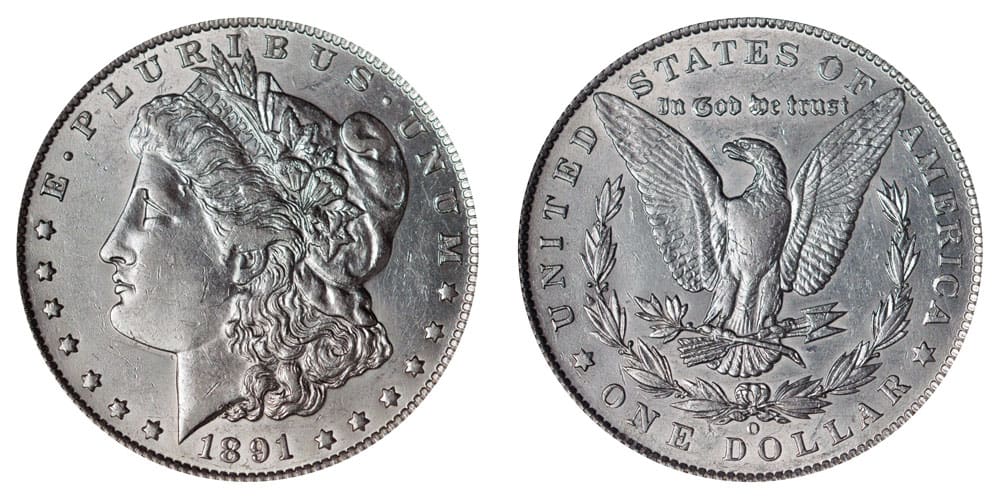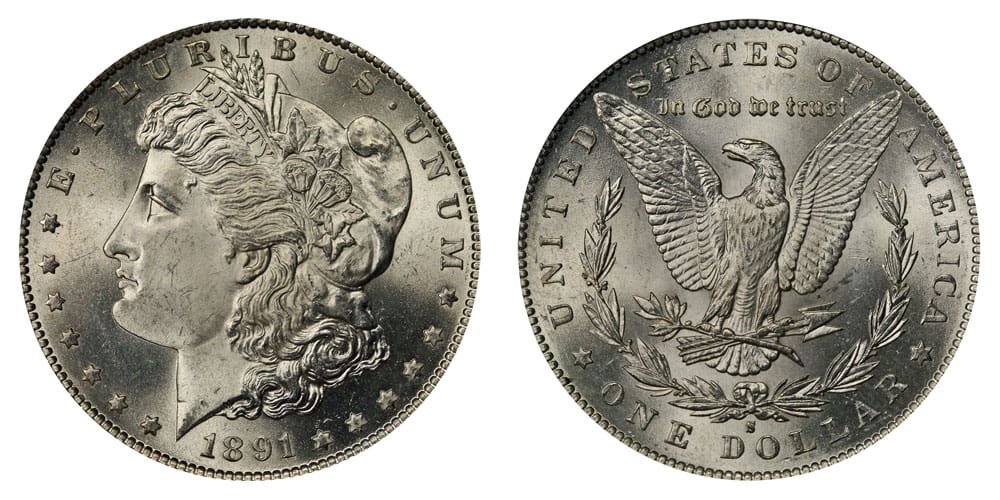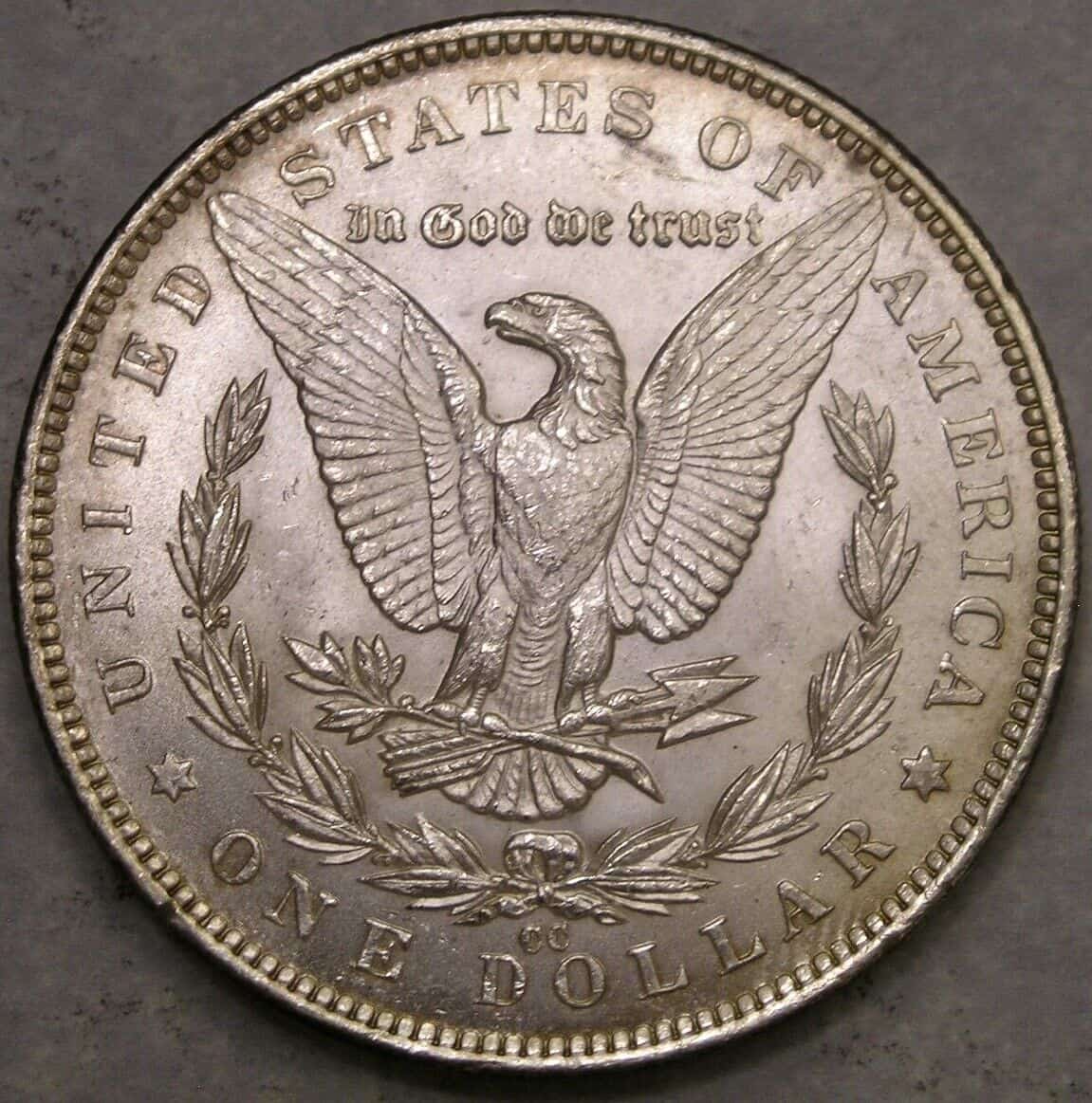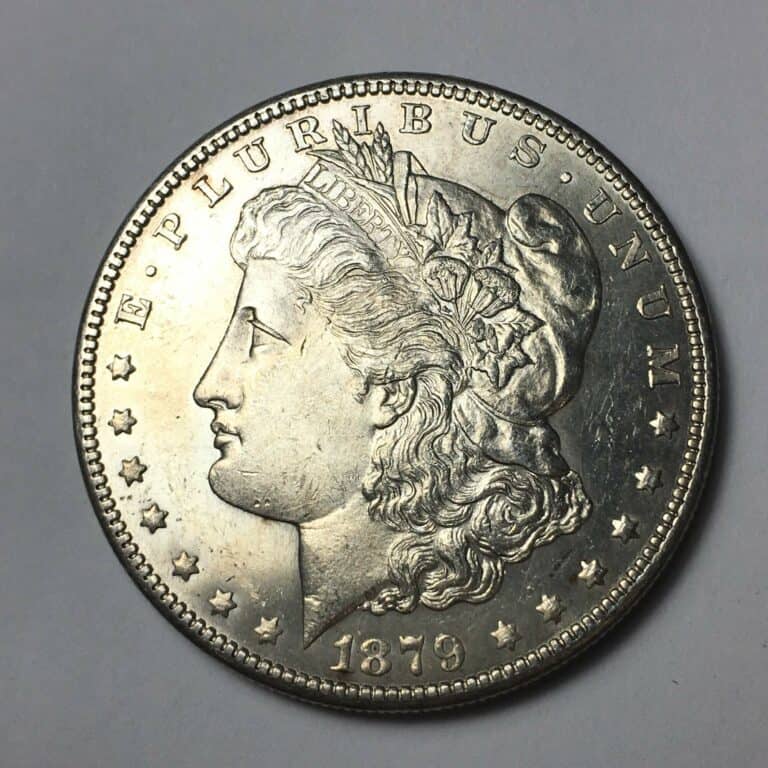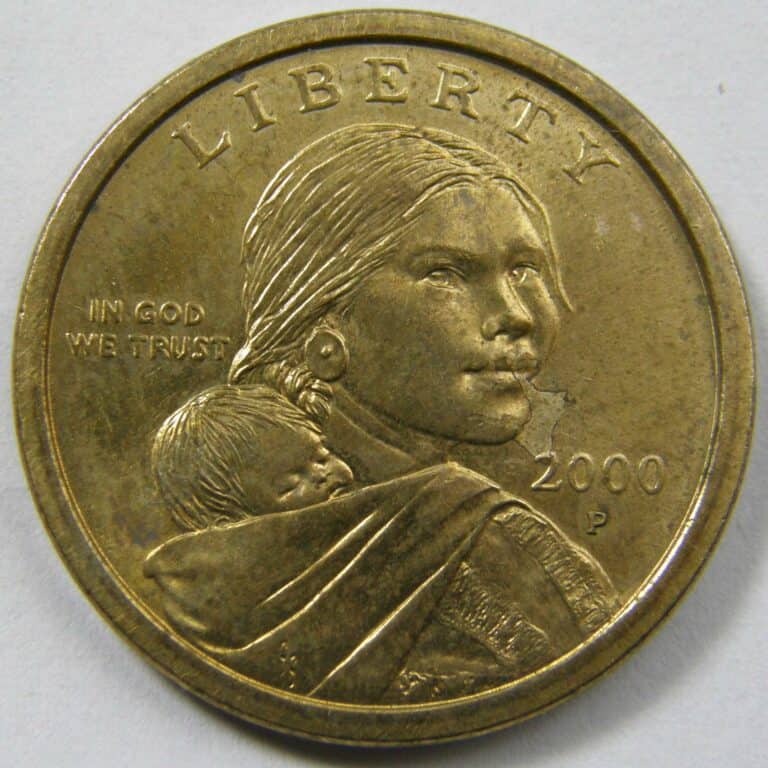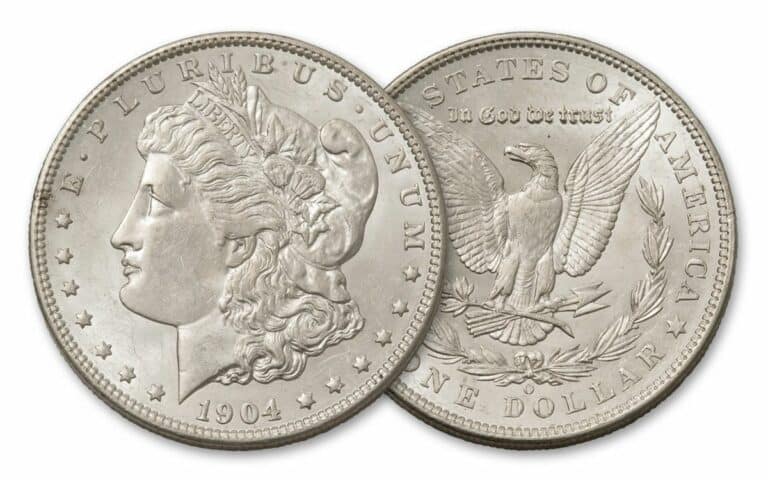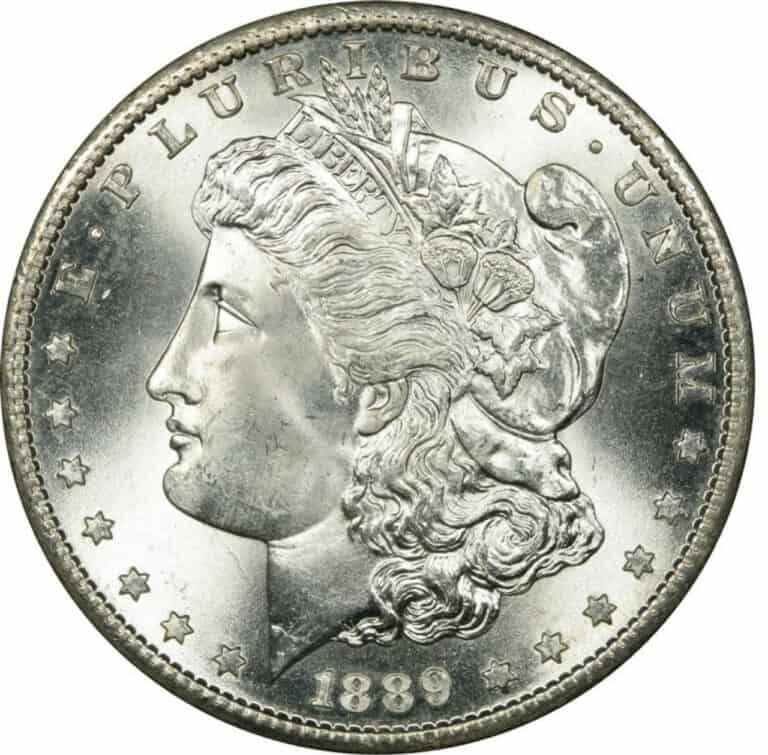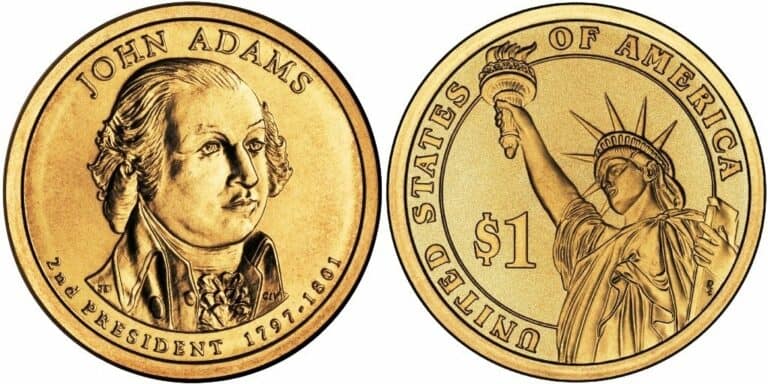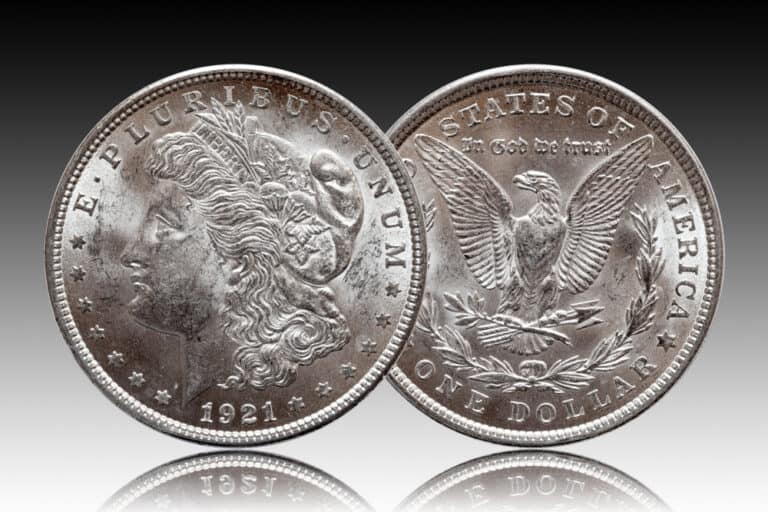1891 Silver Dollar Value: How Much is it Worth Today?
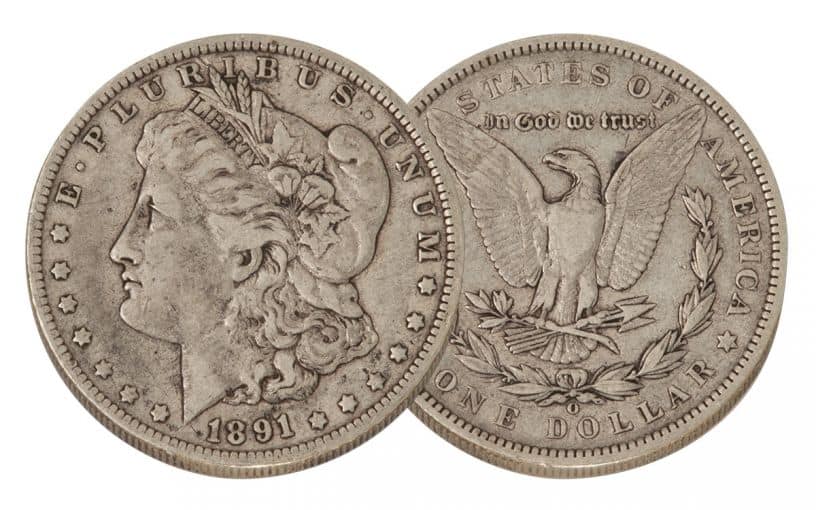
The silver Morgan dollar is the most widely collected U.S. coin among numismatic enthusiasts in America. Its huge 1.5-inch diameter and fine silver content make it satisfying to hold. Plus, it is very valuable today.
But how much does this collector’s item cost today, exactly? Today, we will take a deep dive into the 1891 silver dollar value. Let’s explore some of the factors that increase this coin’s modern-day value, from its rare errors to high coin grades in mint-state conditions.
Ready to learn more about this coveted Morgan silver dollar? If you are, let’s jump right in!
1891 Silver Dollar Value Chart |
||||||
| Mint Mark | Good | Extremely
Fine |
AU58 About Uncirculated | MS62 Uncirculated | MS64 Choice Uncirculated | MS66 Gem Uncirculated |
| 1891 No Mint Mark Silver Dollar Value | $36 | $50 | $65 | $110 | $625 | $12,000 |
| 1891 “CC” Silver Dollar Value | $95 | $240 | $390 | $650 | $1,200 | $18,000 |
| 1891 “O” Silver Dollar Value | $36 | $50 | $130 | $310 | $650 | $26,500 |
| 1891 “S” Silver Dollar Value | $36 | $50 | $75 | $150 | $400 | $4,000 |
1891 No Mint Mark Silver Dollar Value
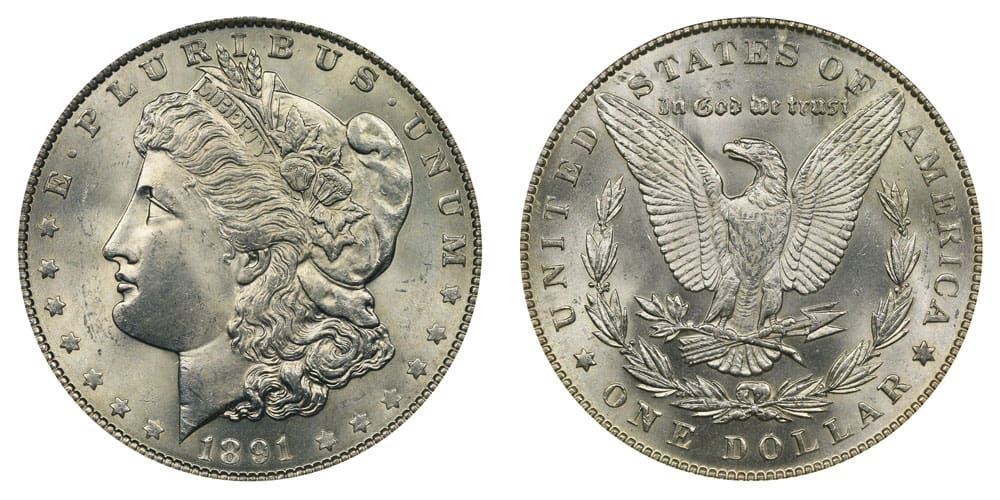
In 1873, the Bland–Allison Act was enacted. As part of the Free Silver Movement, this act allowed Americans to turn in any amount of silver to the U.S. Mints and get it back as legal tender coins. This act is what ultimately led to the creation of the Morgan silver dollar, first circulated in 1878.
See, the last dollar coin was the Seated Liberty dollar and was legislated out of circulation in 1873. However, Americans wanted to have a new silver coin again to make the most out of the Bland–Allison Act and so efforts to create a new silver dollar coin were soon in the works in 1877.
That year, the U.S. Mint Director, Henry Linderman, commissioned George T. Morgan to create the design for the new dollar. Morgan then hired Anna W. Williams—a schoolteacher in Philadelphia—to model Lady Liberty for the design.
Morgan said that Anna’s face and profile were the most perfect he had ever seen. She was described to have had a Grecian nose and beautiful blue eyes, which made her all the more worthy of modeling as America’s Lady Liberty.
A year later, Morgan’s dollar design was struck on 90% silver. Its obverse featured Lady Liberty looking to the left. She wears a liberty cap and has wavy hair. Around the coin are the Latin words “E pluribus unum” and the date, separated by stars.
On the coin’s reverse is an American eagle who looks thin and scrawny—something critics were quick to point out. It sits on arrows and branches. Underneath the eagle is an olive branch wreath tied with a ribbon.
Above the eagle’s head are the words “In God We Trust.” All around the reverse’s rim are the words “United States of America” and “One Dollar.”
A tiny “M” appears on both sides of the coin to honor George T. Morgan, the designer. It’s the first time a designer’s initial is shown twice on a coin. On the obverse, you’ll find the “M” on Lady Liberty’s neck. And on the reverse, it’s written on the left loop of the ribbon tied on the wreath.
In 1891, the Philadelphia Mint struck almost 8.7 million Morgan silver dollars. You can tell that it’s a Philly-minted coin because it has no mint mark beneath the wreath on the reverse.
Although Philadelphia made the highest number of silver dollars out of any Mint that year, many of the 1891 (P) silver dollars did not survive. Because of that, these coins are rare today and are considered a semi-key date for collectors.
That means that even in circulated conditions, the 1891 (P) silver dollars are still high in value. Of course, being tied to its high silver content with 0.9 fineness plays a part in these high prices, too.
Even in a mere good, circulated condition, an 1891 (P) silver dollar is valued today at $36. In extremely fine condition, the number rises to $50. And at the highest circulated grade of AU58, its value sits at $65.
In uncirculated conditions, an 1891 (P) silver dollar is commonly found between the lower mint-state grades of MS61 and MS64. At MS61, you can sell it for $95. The price shoots up to $110 and $170 at MS62 and MS63, respectively, until skyrocketing to $625 at MS64.
Gem-quality issues of the 1891 (P) dollar are quite rare. But when you do get your hands on one of them, you can be sure that they’re worth a pretty penny. An MS66 coin, for example, can sell today for $12,000.
1891 CC Silver Dollar Value
Over at Carson City, the Mint had struck more than 1.6 million silver dollars in 1891. Previously, the “CC” dollars minted in the 1880s were set aside for proofs and collector’s items. But in 1891, some of the coins were put into public circulation.
You’ll know that your 1891 silver dollar was minted in Carson City if it has a tiny “CC” mark under the laurel wreath on the coin’s reverse.
Carson City created the fewest silver dollars in 1891, making them hard to find and expensive, especially in mint-state. They are the most expensive coins of this issue in most grades.
Even in poor and heavily worn condition, an 1891 CC silver dollar is worth almost $100 today. In extremely fine condition, the value rises to $240. And in AU58 (about uncirculated condition), it can sell today for a high price tag of $390.
But all that is nothing compared to how valuable an 1891 CC silver dollar is in an uncirculated, mint state. These coins are most common in MS62 and MS63, for which you can sell these dollar coins for $650 and $800, respectively. At MS65, the price shoots up to $3,800.
It’s difficult to find gem-quality 1891 CC silver dollars. Finding one will feel like a jackpot, especially because they’re so valuable today. An MS66 coin, for example, can sell for $18,000. And at a near-perfect MS67 grade, the value sits at around $42,000.
1891 O Silver Dollar Value
The New Orleans mintage of the 1891 silver dollar hit just shy of 8 million coins. Many of the coins produced here were not well-struck and even had clash marks on them.
That’s why even if the mintage was quite high (rivaling the total number of Philadelphia-minted silver dollars that year), these coins are still very valuable at mint state. In fact, at MS66, the 1891 O silver dollar is more expensive than the dollar from any other Mint of the same date.
In circulated conditions, the price of the 1891 O silver dollar is very similar to that of their Philly-minted sisters. In good condition, you can sell your coin for about $36. And in extremely fine condition, the price gets bumped up to $50.
But the price gets slightly higher in uncirculated conditions. At MS62, these coins can be sold at around $310. At MS63—the most common grade for this coin—you’ll find the value sitting at $445.
Of course, the higher the mint-state grade, the more expensive the coin is. An 1891 O silver dollar in grade MS65 is worth $6,000 today. An MS66 gem, on the other hand, might be able to sell for around $26,500.
1891 S Silver Dollar Value
Lastly, we have the San Francisco silver dollars. In 1891, almost 5.3 million of these coins were struck at the Mint. However, a big chunk of them was kept in Treasury vaults for decades, only released to the public and numismatic collectors towards the 1960s.
Like the circulated 1891 silver dollars from Philadelphia and New Orleans, the Frisco-minted coins are worth $50 in extremely fine condition. At AU58, the value goes up to $75—a tad bit more expensive than a Philly-minted 1891 dollar.
Many of these recently released 1891 S silver dollars are in mint-state, uncirculated condition. However, most of them are graded quite low on the scale because they had so many contact marks from being in a bag with other coins for so long.
These coins are easy to find between grades MS62 to MS64 and can be valued anywhere between $150 to $400. However, it’s most common in grade MS63, which gives the coin a price tag of $185.
In superb gem state, the 1891 S silver dollars hit a five-digit value. An MS67 coin, for example, is valued now at $16,500. The finest example of the 1891 S dollar in existence is a flawless MS67+ coin that sold for over $31,000 in 2021.
1891 Silver Dollar Grading
Grading your 1891 silver dollar is key if you want to know how much its true and accurate value is.
Coin-grading is all about looking at the wear of your coin, so make sure to check the high points of your 1891 dollar when assessing its condition. These include Lady Liberty’s ear and eye, as well as the body of the eagle on the reverse.
Know the ins and outs of grading silver Morgan dollars by watching this insightful video:
Rare 1891 Silver Dollar Error List
It’s difficult to look for errors in the 1891 silver dollar. That’s because back in the 19th century, the Mints were good about not releasing coins with errors, thanks to low mintages. Of course, there are still a few coins that escaped into circulation with mint errors, raising the value of those coins today.
Here are some errors you might find interesting:
1891 Silver Dollar Doubled Ear and Moustache Error
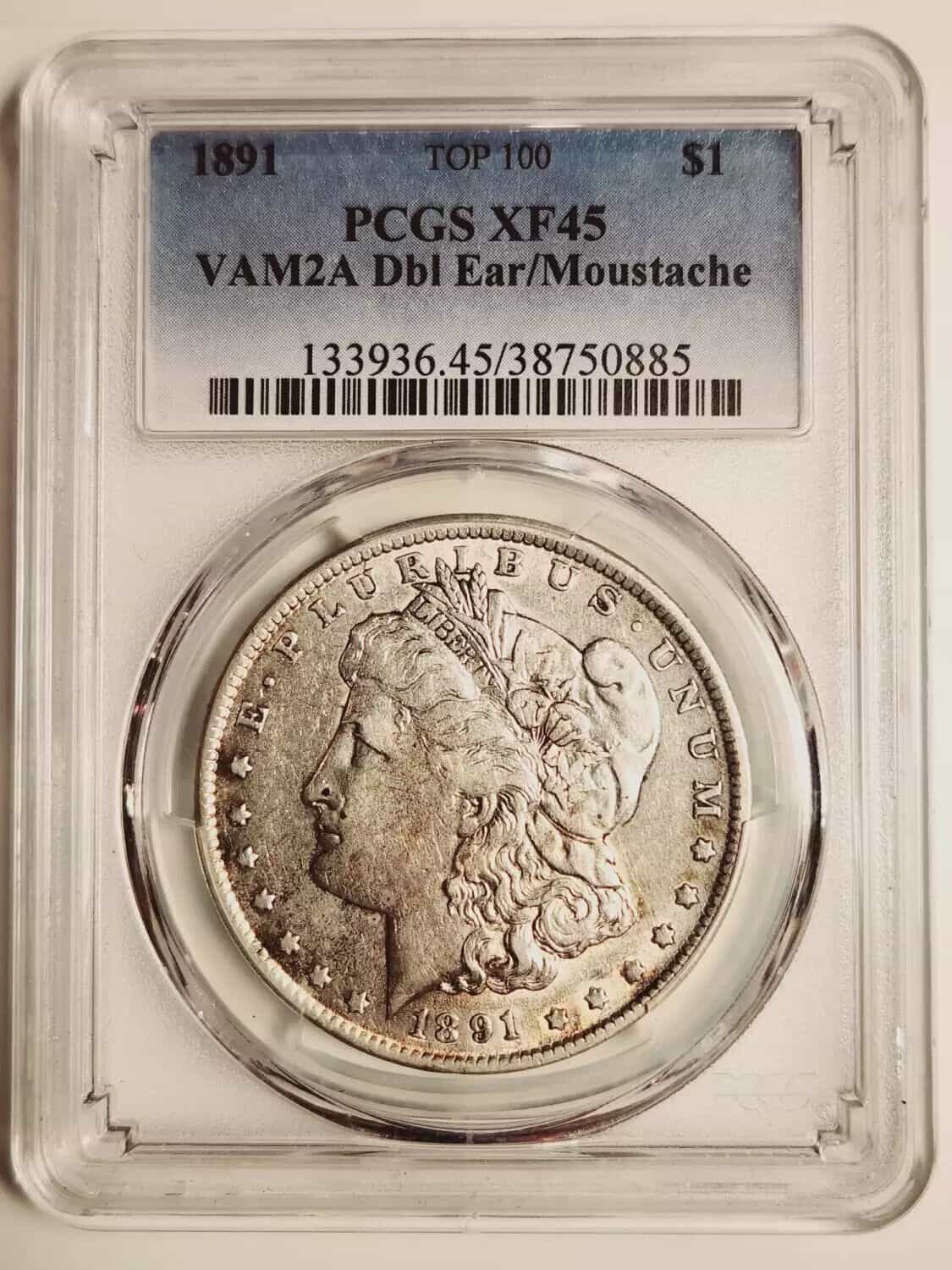
When a coin has a doubled die error, it’s usually most obvious on the letters and numbers of the coin. But the 1891 silver dollar has a unique doubling that you can find on Lady Liberty’s ear and upper lip. This error was found on a circulated VF25 coin and was sold for $200.
1891 Silver Dollar Spitting Eagle Die Chip Error
Another interesting mint error found on the 1891 silver dollar is a popular die chip error right by the mouth of the eagle, which makes it look like it’s spitting. It was found on a fine, sharply struck MS66+ coin which ended up selling for over $37,000.
1891 Silver Dollar Rotated Dies Error

A rotated die error occurs when the dies for the obverse and reverse are not precisely aligned before stamping a coin, making one side look rotated by a few degrees.
This error was once found on an AG3 1891 O silver dollar. The dies were rotated 60 degrees counterclockwise and ended up selling for almost $100. A coin in this condition with no errors would have been sold for only $34.
1891 Silver Dollar FAQs
What makes a 1891 silver dollar rare?
Firstly, an 1891 silver dollar is rare mostly because of its very old date. Back in the 1890s, Mints did not produce as many coins as they do now each year, so old coins can be quite scarce today.
Other factors that affect an 1891 silver dollar’s rarity include very high grading for mint-state gems and mint errors that make the coin one of a kind. A unique mint mark from a U.S. Mint with low mintage (like the “CC” mark) can also make an 1891 silver dollar rare.
How much silver is in a 1891 silver dollar?
All 1891 silver dollars are made of 90% silver. The remaining 10% of the coin is made of copper.
How much does a 1891 Morgan silver dollar weigh?
An 1891 silver dollar is quite heavy at 26.73 grams. With a diameter of 1.5 inches, it’s no surprise that the 1891 Morgan silver dollar weighs a lot more than the usual, modern-day coin.
Should you clean silver coins?
Any coin collector can tell you that it’s not a good idea to clean your silver coins. Although it’s tempting to wash off some of the grime and dirt on your silver coins, cleaning them might devalue them. It’s best to keep them in their raw and authentic state, especially if you’re looking to sell.

